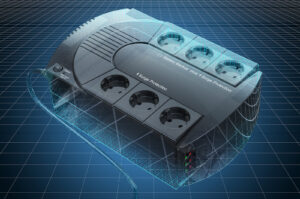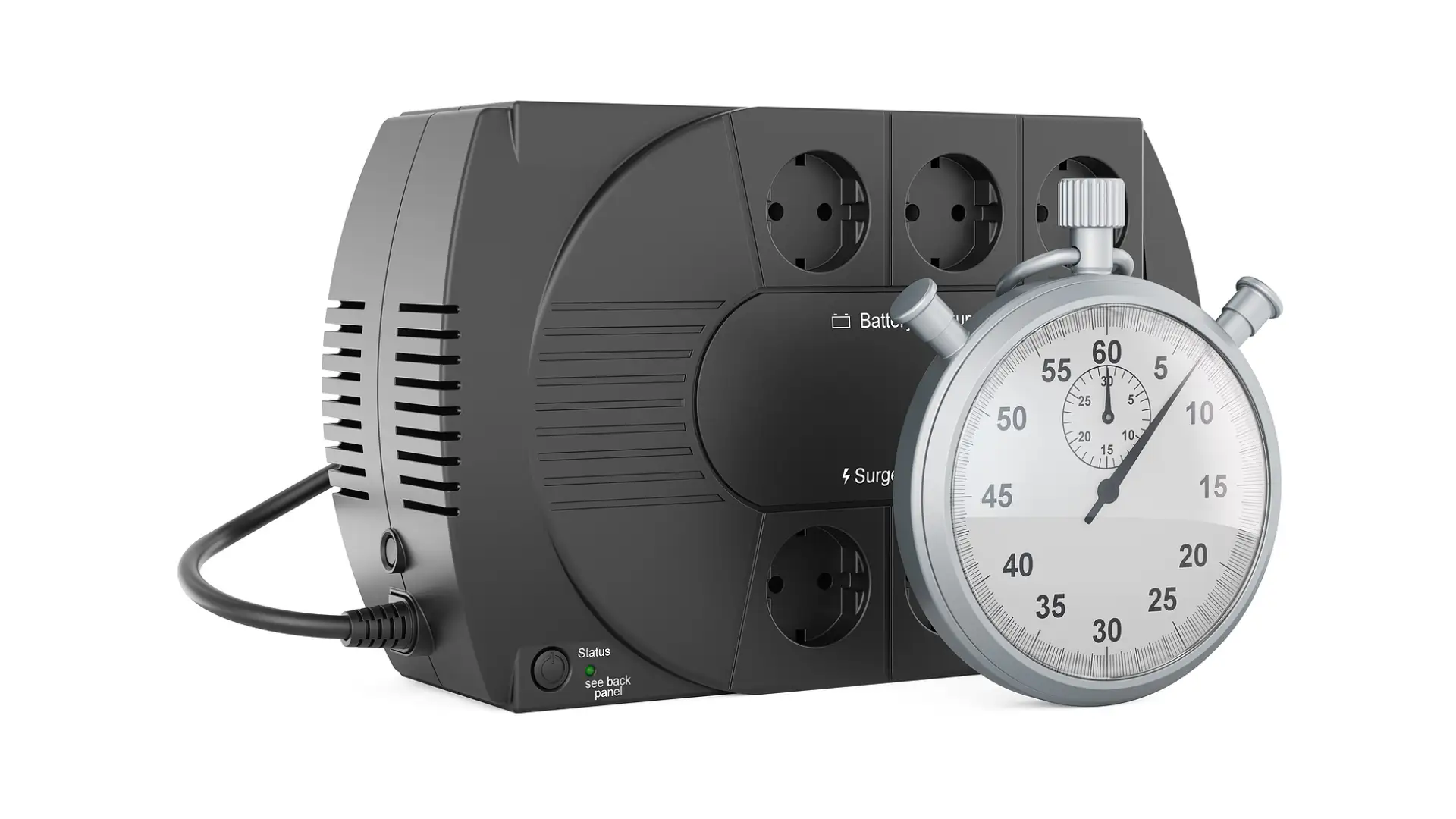
Who Invented Uninterruptible Power Supply
In our modern world, where technology drives nearly every aspect of our lives, the importance of a continuous and reliable power supply cannot be overstated. Imagine a scenario where critical systems shut down abruptly due to power outages, causing data loss, disruption, and potential financial losses. Enter the Uninterruptible Power Supply (UPS), a device designed to bridge the gap between power failures and uninterrupted operations. But who is the mastermind behind this ingenious invention? In this comprehensive article, we delve into the history and evolution of the UPS, uncovering the individuals and innovations that led to its creation.
What is an Uninterruptible Power Supply (UPS)?
Before diving into its history, it's essential to understand what a UPS is. An Uninterruptible Power Supply, commonly abbreviated as UPS, is an electronic apparatus designed to provide short-term power when the main power source fails. Additionally, it can also protect against voltage surges, ensuring that connected devices remain safe and functional during electrical inconsistencies.
The Birth of UPS: Initial Inventions and Innovations
So, who invented uninterruptible power supply? The origins of UPS are somewhat murky, with no single inventor or date stamped onto its birth certificate. However, the necessity for a consistent power source can be traced back to the early 20th century.
As industries grew and technology progressed, the need for reliable power became paramount. Early iterations of UPS systems were rotary designs, which used an electric motor coupled with a generator. When the power was consistent, the motor would run, turning the generator and charging a set of batteries. In the event of a power outage, the batteries would take over, using the stored energy to turn the generator and provide power.
These rotary systems were bulky, expensive, and had limitations in terms of their runtime. However, they were the precursor to what we know as UPS today, serving as the primary solution for power continuity in the early days.
The Early Days: Emergence of Power Backup Solutions
Before the advent of the modern UPS, power backup solutions were rudimentary and limited in their capabilities. Early systems involved the use of batteries and generators to provide temporary power during outages. These setups were primarily used in critical applications such as telecommunication centers, hospitals, and military installations. However, they lacked the sophistication and efficiency that we associate with modern UPS systems.
The Ingenious Inventor: Harold P. Brown
The story of the UPS takes us back to the late 1920s when electrical engineer Harold P. Brown invented what is considered the precursor to the modern Uninterruptible Power Supply. Brown, a pioneer in electrical engineering, was already well-known for his work in areas such as electrostatic precipitation and electric power transmission. In 1923, he founded the H.P. Brown Engineering Company, which later played a significant role in the development of the UPS.
In the late 1920s, Brown patented an “Electric Power Storing Apparatus” in 1928 (U.S. Patent No. 1,687,695), which can be regarded as an early version of the UPS. His invention aimed to address the challenges posed by power fluctuations and interruptions that affected various industries. Brown's system involved the use of batteries to store electrical energy during periods of normal power supply and release it during outages. While his invention was a pioneering step, it lacked some features that modern UPS systems offer, such as automatic switchover and seamless power transition.
Evolution through the Decades: Advancements in UPS Technology
1960s-1970s: Emergence of Ferroresonant Transformers
The period spanning the 1960s to the 1970s was a transformative era for Uninterruptible Power Supply (UPS) technology, punctuated by the development and integration of ferroresonant transformers. These cutting-edge transformers brought forth several advantages over their predecessors.
Most notably, they were adept at delivering a far more stable output voltage even in the face of power inconsistencies and fluctuations. Such stability was pivotal as it considerably diminished the threat of potential equipment damage, ensuring that delicate electronic devices remained safe from sudden voltage spikes or dips.
However, while ferroresonant transformers signaled progress in the domain of power supply, they were not without drawbacks. The initial generations of UPS systems that incorporated these transformers were characteristically large and cumbersome.
Their physical bulkiness made them challenging to accommodate in spaces that demanded compact solutions. In addition to their size, these early UPS systems weren't particularly efficient in their energy consumption, which could lead to increased operational costs. Furthermore, they had a limited capacity, meaning they couldn't support large-scale or high-power operations for extended durations. As the years progressed, manufacturers would seek ways to overcome these limitations, paving the way for the next iterations of UPS technologies.
1980s: Birth of Modern UPS Systems
The 1980s ushered in a transformative phase for Uninterruptible Power Supply (UPS) systems, setting the foundations for the advanced solutions prevalent in today's world. This decade witnessed the proliferation of solid-state technology, which replaced older, mechanical components with electronic ones, ensuring more efficient operation and reduced wear and tear.
Additionally, the integration of microprocessors allowed for better control, diagnostics, and adaptability of the UPS systems, leading to enhanced performance and user customization.
Another significant advancement was the introduction of high-frequency switching. This technological leap was instrumental in reducing the size of the UPS units while simultaneously enhancing their efficiency. Such technological strides were complemented by the incorporation of features like automatic voltage regulation (AVR), which maintained a consistent output voltage irrespective of input voltage fluctuations, and automatic switchover functionalities, ensuring an uninterrupted power supply by instantly transitioning to backup power during main power failures.
During this pivotal decade, certain companies emerged as leaders and pioneers in the UPS sector. One such notable entity was APC (American Power Conversion). Their contribution to the UPS landscape was monumental. APC not only introduced innovative designs that were both efficient and aesthetically appealing, but they also emphasized the development of user-friendly interfaces.
This approach made it easier for individuals, even those not technically inclined, to understand and operate their UPS systems. Consequently, UPS devices began to find a place not just in commercial establishments but also in homes, marking a significant expansion of their market reach and user base. Through their efforts and those of other companies, the 1980s truly became the decade that redefined and modernized the world of UPS systems.
1990s-2000s: Advancements in Battery Technology and Online UPS
Spanning the era of the 1990s through the early 2000s, the world of Uninterruptible Power Supply (UPS) systems underwent a series of transformative changes, thanks to advancements in both battery technology and system architectures.
One of the most remarkable innovations of this period was the introduction and widespread adoption of valve-regulated lead-acid (VRLA) batteries. These batteries represented a significant shift from traditional flooded or wet-cell batteries. VRLA batteries, often referred to as “sealed” lead-acid batteries, employed a unique design where the electrolyte was immobilized, either in gel or absorbed in a fibrous mat.
This ensured minimal maintenance, reduced risk of leakage, and also allowed for more flexible placement options. The end result was a UPS system with enhanced runtime, augmented reliability, and reduced maintenance needs.
Alongside battery innovations, the realm of UPS systems saw the rise of a new design – the online UPS. This design contrasted with the earlier standby or line-interactive designs. The crux of online UPS lies in its double conversion technology. Instead of simply switching to backup power during outages, online UPS systems continuously convert incoming AC power to DC and then reconvert it back to AC.
This two-step process acts as a buffer, ensuring that the output power remains consistent and devoid of any fluctuations, disturbances, or electrical noise. Thus, connected equipment always receives a pure, stabilized power supply, safeguarding sensitive electronics and ensuring uninterrupted operations.
Together, the combination of advanced battery solutions and the proliferation of online UPS systems during the 1990s and early 2000s played an instrumental role in setting new benchmarks for power backup solutions, addressing both longevity and quality of power delivery.
Present and Future: Smart-UPS and Green Technologies
As we navigate the currents of the modern-day and peer into the horizon of the future, Uninterruptible Power Supply (UPS) systems are evolving rapidly, becoming more intelligent and eco-friendly.
Modern Smart-UPS units are a testament to the fusion of technology and utility. These units are embedded with advanced features like remote monitoring capabilities, allowing users and administrators to keep tabs on the system's performance from anywhere in the world.
Coupled with sophisticated power management software, these UPS systems can analyze power consumption patterns, forecast potential issues, and adjust operations to ensure optimum performance. The integration with cloud-based platforms further augments these capabilities, enabling seamless updates, data storage, and in-depth analytics. Such innovations not only enhance the lifespan and efficiency of the UPS units but also provide insights for preventive maintenance and tailored energy optimization.
Parallelly, with the mounting concerns over environmental degradation and the global emphasis on sustainability, the UPS industry is experiencing a paradigm shift. There's a burgeoning focus on developing energy-efficient and environmentally friendly power solutions. Manufacturers are delving into the potential of lithium-ion batteries, which offer longer lifespans, faster recharge times, and reduced maintenance needs compared to traditional battery types.
Furthermore, there's a growing interest in harnessing renewable energy sources, such as solar or wind power, to complement or even power UPS systems. These initiatives not only lessen the carbon footprint of UPS operations but also amplify the efficiency and reliability of power backup systems, paving the way for a sustainable and technologically advanced future.
Fascinating World of Uninterruptible Power Supplies
UPS are a remarkable testament to modern engineering and technology, designed to ensure a seamless power supply experience even in the face of unexpected outages. The inner mechanisms of UPS units are a marvel in themselves, orchestrating a symphony of processes to maintain uninterrupted power flow. Here, we take an in-depth look at the key components and functions that make UPS systems a vital part of our technological landscape:
- Rectifier: The Ingenious Power Converter At the heart of every UPS system lies the rectifier, a device responsible for the conversion of incoming alternating current (AC) power into direct current (DC) power. This DC power serves a dual purpose – it charges the internal battery of the UPS while simultaneously providing power to the inverter. This integral process ensures that the UPS remains ready to leap into action whenever power disruptions occur.
- Battery Bank: Power Reservoir and Backup Hero The battery bank within a UPS system acts as both a reservoir for energy storage and a reliable backup in case of power loss. As the rectifier charges the batteries with DC power, they become energized, ready to unleash their stored potential when needed. The battery bank forms a crucial link in the UPS chain, offering an essential buffer against sudden power interruptions.
- Inverter: Power Redefined When the grid succumbs to a power outage, the inverter springs to life as a pivotal component of the UPS system. Its role is to convert the DC power stored in the batteries back into usable AC power, ensuring a seamless transition to the battery's energy source. This transformation is the key to maintaining a continuous power supply to connected devices, safeguarding critical operations from disruptions.
- Automatic Transfer Switch: Swift and Seamless Transitions In the event of a power loss, the automatic transfer switch takes center stage. A highly perceptive device, it senses the moment grid power becomes unstable or unavailable. Without missing a beat, it seamlessly transitions the load from the AC mains to the UPS's battery-generated power. This instantaneous switch ensures that sensitive electronics and critical systems remain operational, unaffected by power fluctuations.
- Voltage Regulation: A Stable Power Haven Within the UPS framework, voltage regulation plays an integral role in delivering consistent and reliable power to connected devices. Fluctuations in voltage levels can have detrimental effects on electronic equipment, potentially leading to malfunctions or data loss. UPS systems employ advanced voltage regulation mechanisms to maintain optimal voltage levels, shielding equipment from harm and providing a stable power haven.
- Bypass Mechanism: A Safety Net for Maintenance To cater to maintenance or repair scenarios, UPS units often incorporate a bypass mechanism. This feature enables the seamless transfer of power from the UPS system back to the main power source, bypassing internal components that may need servicing. This ensures that critical operations continue to function without interruption while maintenance tasks are carried out.
Key Companies Behind UPS Innovations
APC (American Power Conversion Corporation):
Commencing its journey in 1981, the American Power Conversion Corporation (APC) stands as a trailblazer in the UPS realm. With a primary focus on enhancing power protection for personal computers, APC has contributed significantly to shaping the landscape of uninterruptible power supply technology. Over the years, APC has crafted a reputation for reliability and innovation, bringing forth a range of UPS systems tailored to safeguard the continuity of personal computing experiences.
Eaton Corporation
Spanning continents and industries, the Eaton Corporation emerges as a multinational powerhouse in power management. With roots extending from Ireland to the United States, Eaton's presence reverberates globally. Within the intricate realm of industrial UPS systems, Eaton has carved a prominent niche, harnessing its expertise to provide robust solutions for critical power protection. The company's rich legacy and diverse portfolio of offerings underscore its enduring commitment to delivering uninterrupted power solutions across industrial domains.
CyberPower
Navigating the intricate intersection of technology and power, CyberPower emerges as a distinguished entity specializing in UPS systems catering to both home offices and professional environments. The brand's forte lies in its versatile array of UPS options, thoughtfully curated to cater to a spectrum of needs. From safeguarding personal workstations to fortifying complex professional setups, CyberPower's dedication to tailoring UPS solutions underscores its commitment to empowering users with reliable power protection. Through innovation and adaptability, CyberPower continues to pave the way for a resilient and connected future.
Conclusion: Tracing the Evolution of a Critical Innovation
The Uninterruptible Power Supply (UPS) has come a long way since its inception, evolving from the rudimentary power backup systems of the past to the sophisticated, efficient, and smart solutions we rely on today. The genius of individuals like Harold P. Brown paved the way for the creation of this essential technology, and subsequent generations of engineers and innovators have built upon that foundation to bring us the UPS systems that play a crucial role in maintaining our connected and technologically driven world.
Sources
continue reading
Related Posts
Uninterruptable Power Supplies In today's world, where technology keeps us […]
Uninterruptible Power Supply For Laptop In today's fast-paced digital world, […]
Small Uninterruptible Power Supply In today's digital age, where connectivity […]





